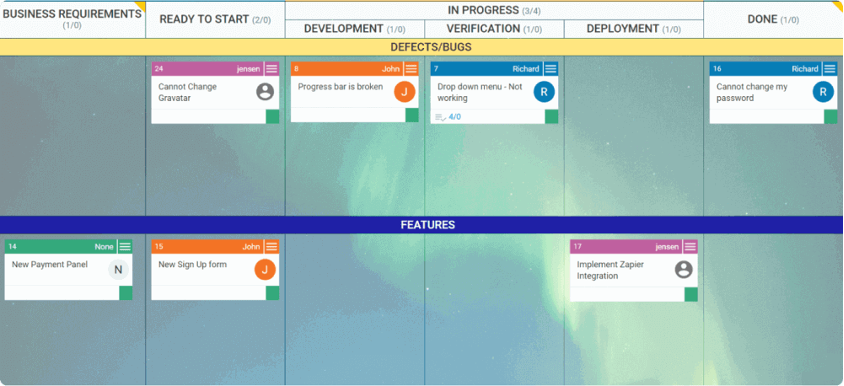Kanban boards are undoubtedly a very good tool for improving workflow efficiency. It allows teams to have a clear view of all work items and control them at different workflow stages. Of course, when considering the creation of a Kanban board, you should keep the team’s needs and Kanban board examples in mind. Therefore, the application of Kanban’s may vary from team to team.
In the following article, we have collected and introduced some good examples of Kanban practice.
Ø Basic Kanban board example
The basic Kanban board is a great start for teams not familiar with the concept of a kanban. It typically contains three to four columns and is not complex. This simple kanban board is a great way for beginners to visualise their work and establish a foundation for highly efficient workflows. Here, the Kanban is applied most organically.
Ø IT Operations Kanban Board Example
The IT operations team has the problem of not being able to prioritise work in the best way. It is due to the huge amount of tasks that IT must perform. The Kanban Board can visualise the workflow and bring significant benefits to the IT operations team.
In addition to using columns to distinguish between flow stages, the team uses Swimlanes to avoid priority conflicts and better understand the importance of the task. After all, Kanban Boards help IT teams plan better, focus on better and shorten delivery times. Based on the capacity of your organisation, your IT team can handle a variety of activities.
Ø Simple kanban board for task management
Managing all team tasks and tracking individual Progress can often be a big headache for project managers. With Kanban Boards, teams can visualise all functions in one space and organise them in an easy to read and understand. Each team can:
- Use the status field to visualise and prioritise the process.
- You can extend complex process steps into your operations and track sub-tasks separately.
- Sort items using rows and swim lanes
- You can show dependencies between tasks to know when each task runs.
Ø Simple Marketing Kanban Board
Marketing teams and projects are known to contain a variety of efforts and variables. Therefore, it is best to use a separate Kanban Board system specialised for different types of processes for effective task tracking. This prime example of a Kanban is set up to trace social media marketing works.
The backlog gathers ideas and marks which tasks to proceed with. Task In Progress explains what the organisation is currently achieving on. You can swiftly recognise whether your operations are designed, copywritten, or reviewed in the secondary process. In addition, all live promotions are recorded in the “In Campaign” field, making it easier to manage. Finally, the line is used to distinguish between weeks and is to be able to plan social media calendar on board.
Bottom Line
All kanban board examples are designed to meet the needs of a particular team. Grasp the needs of your team and build a board along with it. To find the best structure for your team’s work process, you should always improve your kanban board. Depending on the work focus, team functionality, external factors, etc., you can build a Kanban board in various ways. Creating the optimal version of the board is an ongoing process and should reflect all the work environment dynamics.



 Bitcoin
Bitcoin  Ethereum
Ethereum  XRP
XRP  Tether
Tether  Solana
Solana  USDC
USDC  Cardano
Cardano  Lido Staked Ether
Lido Staked Ether  TRON
TRON  Avalanche
Avalanche  Toncoin
Toncoin